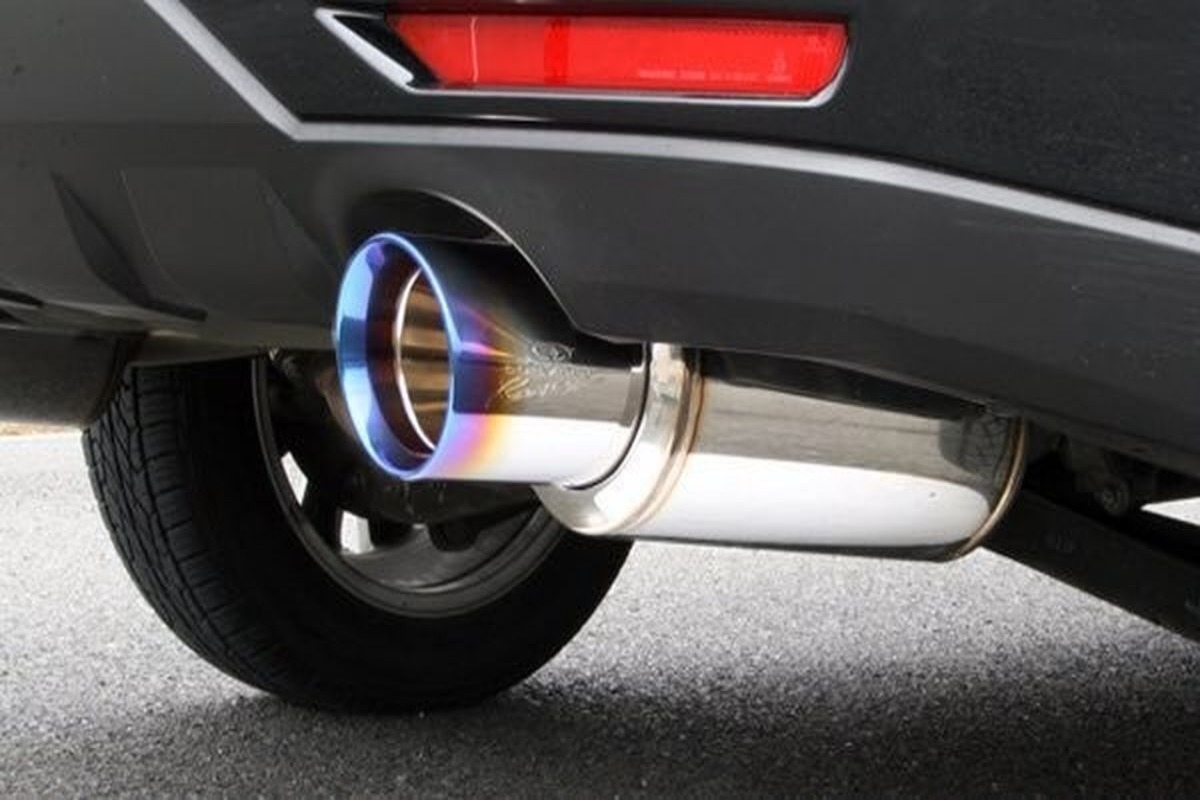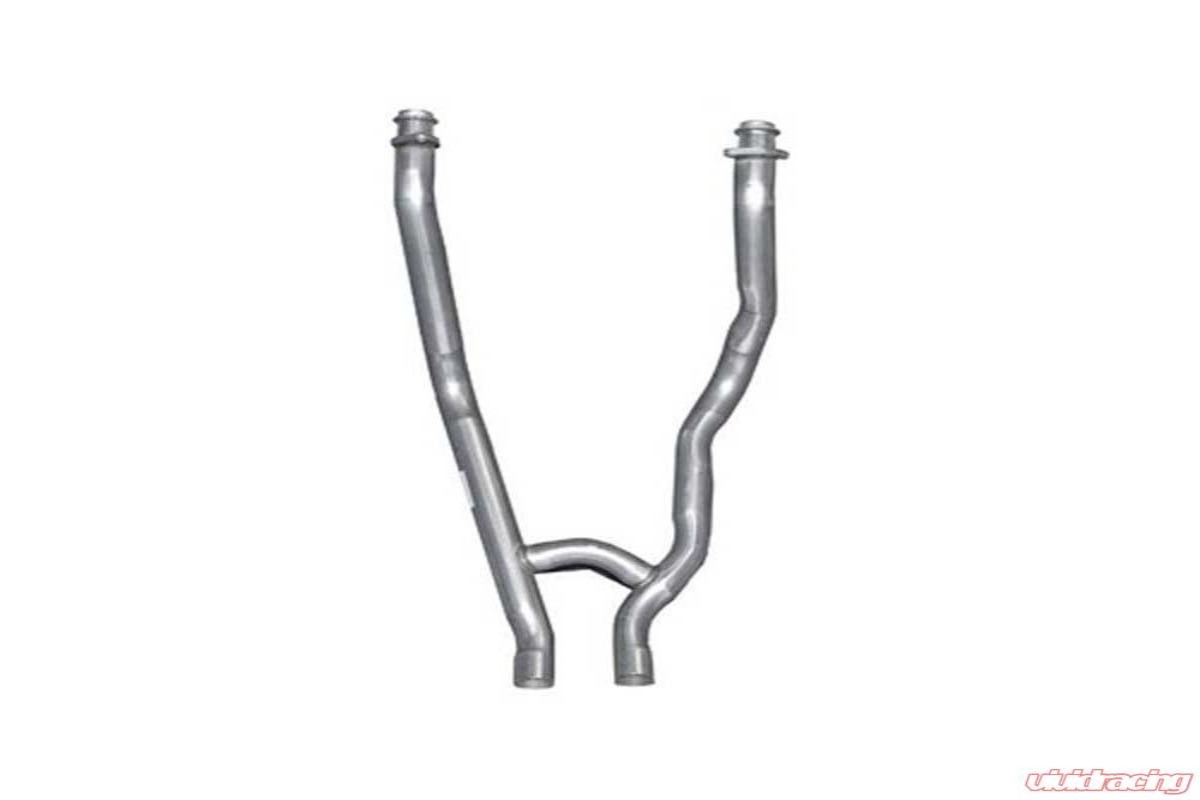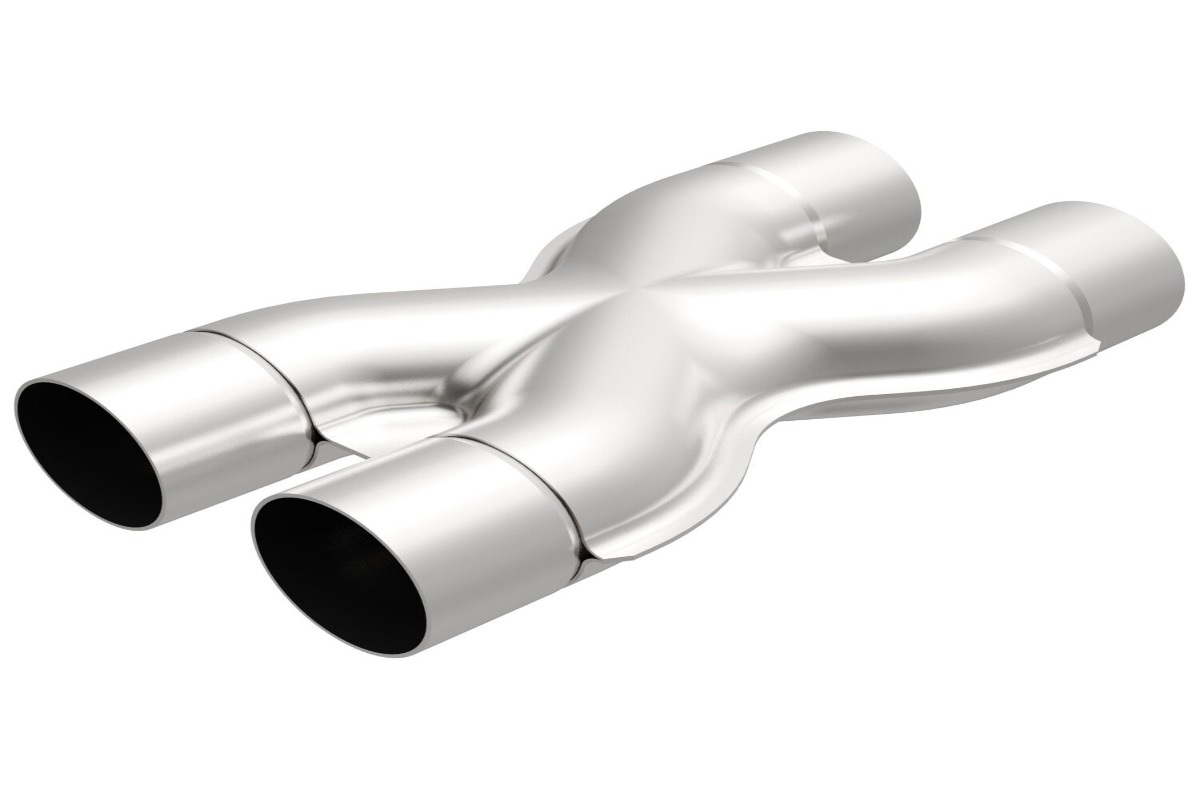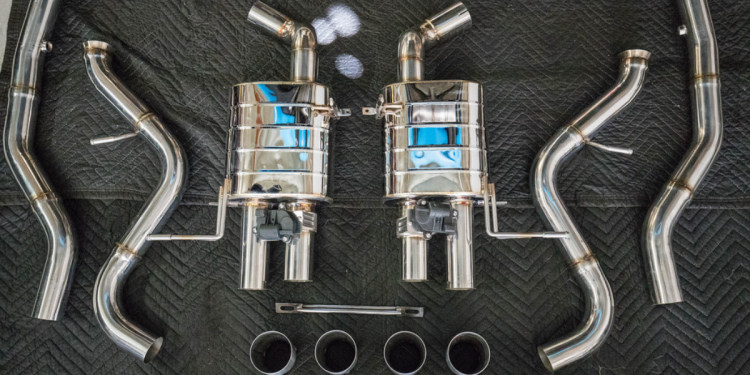There are a lot of choices to make when the time comes to install a new exhaust system on your car. Do you go with an H-pipe or an X-pipe? It can be overwhelming but don’t worry, we’re here to help. In this post, we’ll talk about the differences between H-pipes and X-pipes, and we’ll give you some tips on deciding which one is right for you. Stay tuned!
Shop All Exhaust Systems Here
What is an Exhaust System?

The purpose of an exhaust system is to help your engine efficiently push out the burned gases it creates after combustion. Your car’s exhaust system starts with the header, which connects to each cylinder head on your engine.
From there, you have a manifold that runs horizontally between the headers for each bank of cylinders. The gasses are then channeled into one or two exhaust pipes before exiting through the tips at the end of each pipe.
What are the Main Parts?
An automotive exhaust system includes three main parts:
The manifold pulls air and fuel into the engine. The headers control the flow of air and gas once they enter the cylinders. The muffler controls excess noise after combustion occurs.
Other components can be added to an exhaust system. Some common additions include catalytic converters (a way to reduce harmful emissions), tips (to increase or decrease exhaust noise), flex pipes (flexible hoses that connect various elements to prevent vibrations), and resonators (another way to reduce the amount of noise leaving your car).
Choosing Between H-Pipes and X-Pipes
There are two main types of exhaust systems: H-pipes and X-pipes. They’re very similar, but there are some important differences between them that you should know about.
H-Pipe

This type of exhaust system is the most common design for high-performance vehicles. It’s called an “H-pipe” because it resembles the letter “H.” The H-pipe consists of one length of pipe bent in an “H” shape, with a branch to send exhaust gas to each side of the car. Some H-pipes have split branches with extra tubing that can be used to send more air into the engine cylinders if they need it (this gives your engine the extra power it needs to get out onto the road).

X-Pipe

This type of exhaust system is less common, but it’s gaining popularity among enthusiasts. It’s called an “X-pipe” because it looks like the letter “X.” You can think of it as two H-pipes stacked on top of each other with a crossbar to connect them. The X-pipe has one long branch that splits into two shorter branches. Depending on the design, this branch may send exhaust gas to the front and rear of your car or both sides (hence the name “full-coverage X pipe”).

What are their Differences?
The main difference between H-pipes and X-pipes is where they send exhaust gas—they do this by sending the exhaust gas into different branches of the pipe. H-pipes send exhaust gas to the left and right sides of your car or one side (if there’s a split branch). X-pipes send it to the front and rear of your car, or all four sides if they have split branches.
Here are some other differences between H-pipes and X-pipes:
H-Pipe
This type is usually cheaper than an X-pipe. It directs flow more directly from its source without splitting it up first, which reduces flow resistance for better power output at high RPMs—something that doesn’t matter as much with lower performance cars or on the highway. H-pipe systems tend to be noisier than X-pipe systems because they have less flow resistance, but the split branch on some H-pipes can reduce this noise.
Does an H-pipe make the exhaust quieter?
An H-pipe will make your exhaust system louder because it does not split the flow of gases before sending them to each side (or both sides) of your car. The X-pipe sends each side’s gases separately through a Y-branch or other branches, so it can redirect some of the noises so they won’t be heard outside your vehicle.
X-Pipe
This type is more complex to manufacture and usually more expensive than an H-pipe. Its flow is more evenly distributed between all four branches, which means it has better lower RPM response time—something that becomes more important with higher performance cars or for regular driving use. X-pipe systems tend to be quieter than H-pipe systems since they have less sound isolation from the engine bay, but the split branches on some X-pipes can increase this noise.
How does X-pipe affect exhaust sound?
X-pipe has a more complex structure and is harder for the manufacturer. It also has better lower RPM response time, which is important for higher performance cars or everyday driving use. X-pipe systems tend to be quieter than H-pipe systems since they have less sound isolation from the engine bay, but the split branches on some X-pipes can increase this noise.
What about installation?
Installation time and difficulty depending on what type of exhaust system you choose and your mechanic’s experience, but generally they’re very similar: expect about a few hours to install both types of systems with standard tools. They can often be installed in one afternoon.
Which one should I choose?
So which type of exhaust system should you get? If you’re looking for better power output at high RPMs, an H-pipe is your best choice. However, if you want better lower RPM power or more sound insulation, you’ll probably be happier with an X-pipe.
Sometimes you can get the best of both worlds by getting a split H-pipe though there are different opinions on whether these systems offer any performance benefits over standard H-pipes. Just remember that this is just one part of your overall exhaust system and that you should always aim for the highest quality parts when choosing between the two types of pipes.
Conclusion
The H-pipe is the best choice if you’re looking for an exhaust system that will offer more power. If you are not concerned about increased horsepower, but still want to make your engine run cleaner and quieter, then go with the X-pipe. With the information provided in this article on these two types of exhausts systems, it should be easy to figure out which one might work better for your vehicle’s needs.




